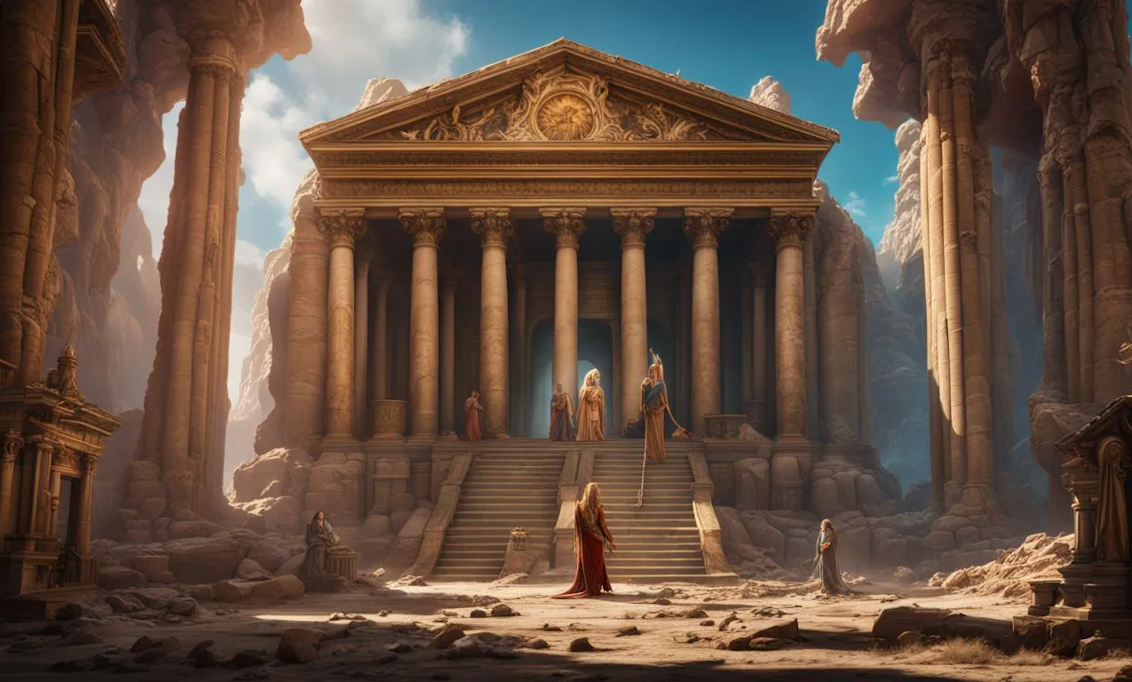The Capitoline Triad holds a central place in Roman mythology and religious practices, symbolizing the core of Roman spiritual life and its state religion. This triad consists of three major deities: Jupiter, Juno, and Minerva, who were worshipped together at the Temple of Jupiter Optimus Maximus on the Capitoline Hill, the most important of Rome’s seven hills. The formation and worship of this triad underscore the Roman tendency towards syncretism, the blending of different religious practices and deities, and reflect the societal values and political ambitions of Rome.
Jupiter, the king of the gods, represents the epitome of power and authority, embodying the principles of justice and law. As Jupiter Optimus Maximus, he was seen as the best and greatest, the protector of Rome and the Roman state, and the guarantor of treaties and oaths. His symbols, the lightning bolt and the eagle emphasize his role as the god of the sky and thunder, a sovereign ruler of the heavens, and an arbitrator of human affairs.
Juno, Jupiter’s consort and sister, embodies aspects of femininity, protection, and fertility. As Juno Regina (Queen Juno), she was venerated as the protector of the Roman state, with a special emphasis on the safeguarding of women and the institution of marriage. Juno’s worship in Rome predates the formation of the Capitoline Triad, indicating her deep-rooted presence in the Roman religious landscape. Her association with aspects of warfare and her role as a guardian of the Roman people also highlight the multifaceted nature of divine protection and care in Roman religion.
Minerva, the goddess of wisdom, arts, trade, and strategy, completes the triad. Often depicted with her sacred creature, the owl, Minerva was revered not only for her intelligence and strategic prowess but also for her association with craftsmen and artisans. This reflects the Roman appreciation for the practical applications of knowledge and skill in both peaceful and military endeavours. Minerva’s inclusion in the Capitoline Triad underscores the importance of wisdom and skill in the maintenance of the state and the execution of its expansionist policies.
The worship of the Capitoline Triad was central to Roman state religion, with the Temple of Jupiter Optimus Maximus serving as a focal point for religious ceremonies, especially those of state importance. The construction of this temple, traditionally dated to the early Republic, signified Rome’s emergence as a powerful city-state with ambitions that transcended its immediate geography. The temple not only served as a religious centre but also as a repository of Roman treaties, and laws, and a venue for important public and political gatherings, symbolising the inseparable link between religion and state in Rome.
The significance of the Capitoline Triad extended beyond the religious sphere into the political and social fabric of Rome. The triad’s composition reflects the Roman approach to religion as a means of reinforcing social cohesion and political authority. By venerating deities associated with different aspects of life and statecraft—sovereignty, protection, wisdom, and skill—the Romans cultivated a religious practice that mirrored and supported the complexities of Roman society and its imperial ambitions.
In conclusion, the Capitoline Triad of Jupiter, Juno, and Minerva represents a fundamental aspect of Roman religion, embodying the convergence of divine authority, protection, and wisdom. The worship of these deities, centred on the Capitoline Hill, highlights the interplay between religion and politics in Rome, serving both as a testament to the city’s spiritual aspirations and as a mechanism for maintaining social order and political power. Through the Capitoline Triad, we gain insight into the values that underpinned Roman society and the ways in which religion was intertwined with the fabric of Roman life.





